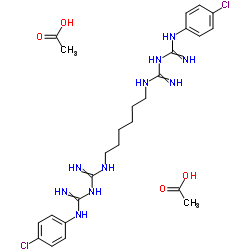Effect of chlorhexidine and ethanol-wet bonding with a hydrophobic adhesive to intraradicular dentine.
Manikandan Ekambaram, Cynthia Kar Yung Yiu, Jukka Pekka Matinlinna, Jeffrey Wen Wei Chang, Franklin Russell Tay, Nigel Martyn King
Index: J. Dent. 42(7) , 872-82, (2014)
Full Text: HTML
Abstract
To evaluate the effect of adjunctive application of ethanol-wet bonding and chlorhexidine (CHX) with a hydrophobic adhesive on bond durability of fibre posts to intraradicular dentine.Ninety-six extracted human teeth with a single root and root canal were prepared for post placement after endodontic treatment. The teeth were randomly divided into four groups (n=24) after etching and rinsing for rewetting: Group 1: water-wet bonding, Group 2: water-wet bonding with CHX, Group 3: ethanol-wet bonding and Group 4: ethanol-wet bonding with CHX. Teeth in Groups 1 and 2 were treated with either distilled water or distilled water with 2% CHX for 60 s; while teeth in Groups 3 and 4 were treated with either 100% ethanol or 100% ethanol with 2% CHX. Two coats of primer, followed by neat resin were applied and light-cured for 40 s. Fibre posts were luted to bonded root dentine using dual-cure resin cement. Bonded roots were subjected to push-out bond strength testing and interfacial nanoleakage evaluation after 24 h, 6 and 12 months of storage. Data were analyzed using 3-way ANOVA (rewetting solutions, time and post space regions) and SNK tests.Groups 3 and 4 showed significantly (p<0.05) higher bond strengths and lower nanoleakage than Groups 1 and 2 after 12 months of ageing. Addition of 2% chlorhexidine to ethanol-wet bonding with a hydrophobic adhesive did not further improve the bonding of a fibre post to intraradicular dentine, when compared to ethanol-wet bonding alone after 12 months of ageing.Ethanol-wet bonding with a hydrophobic adhesive alone could improve the bond durability of fibre post to intraradicular dentine and therefore would increase the success rate of post and core restorations of endodontically treated teeth.Copyright © 2014 Elsevier Ltd. All rights reserved.
Related Compounds
| Structure | Name/CAS No. | Molecular Formula | Articles |
|---|---|---|---|
 |
Chlorhexidine diacetate
CAS:56-95-1 |
C26H38Cl2N10O4 |
|
Antibacterial activity of fluoride compounds and herbal toot...
2015-09-01 [Aust. Dent. J. 60 , 368-74, (2015)] |
|
Photosensitizer and Light Pave the Way for Cytosolic Targeti...
2015-07-01 [J. Immunol. 195 , 166-73, (2015)] |
|
Effect of plasma treatment on the performance of two drug-lo...
2015-07-01 [J. Biomed. Mater. Res. B. Appl. Biomater. 103 , 1059-68, (2015)] |
|
Chlorhexidine-releasing orthodontic elastomerics.
2015-01-01 [Dent. Mater. J. 34 , 321-6, (2015)] |
|
Effect of antimicrobial agents incorporated into resilient d...
2015-01-01 [Oral Dis. 21(1) , 57-65, (2014)] |